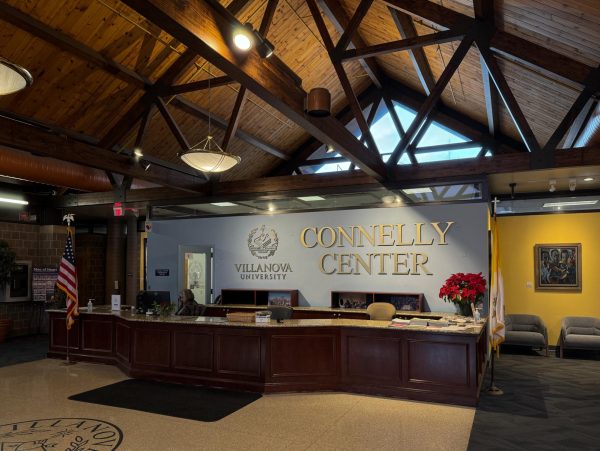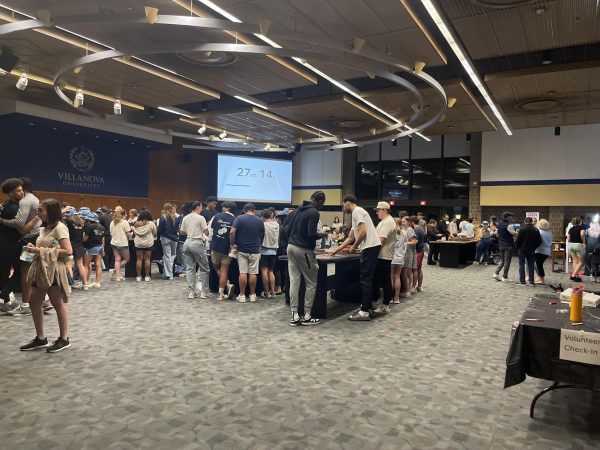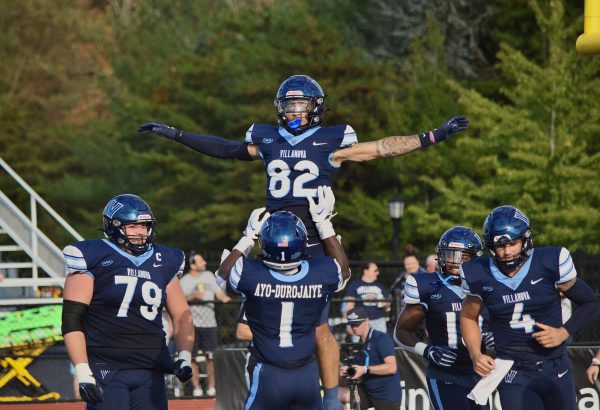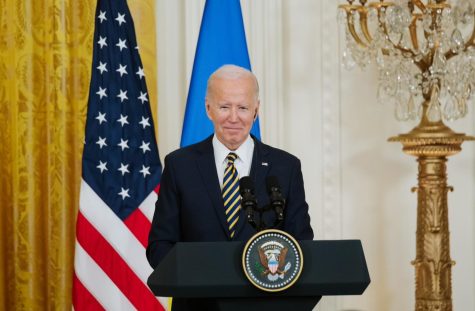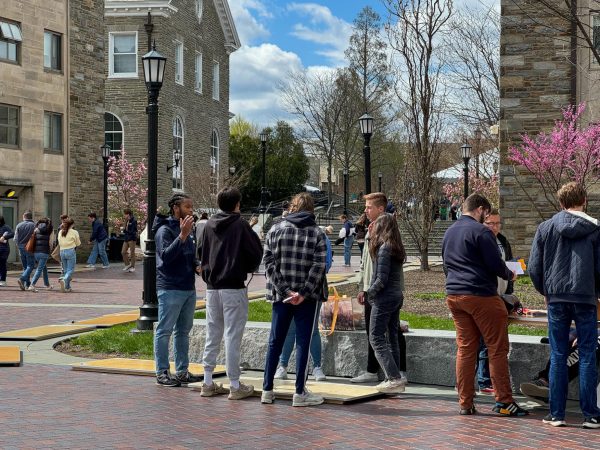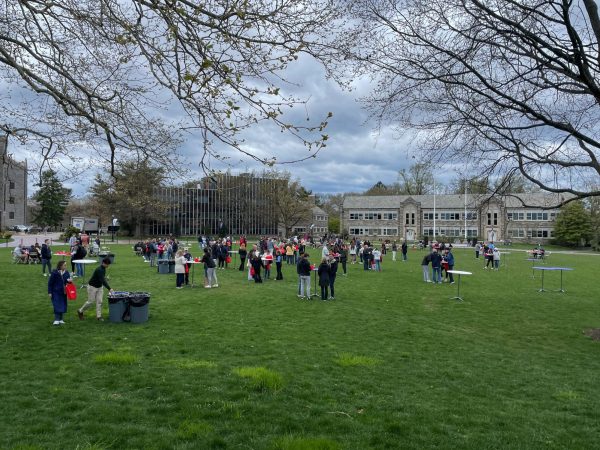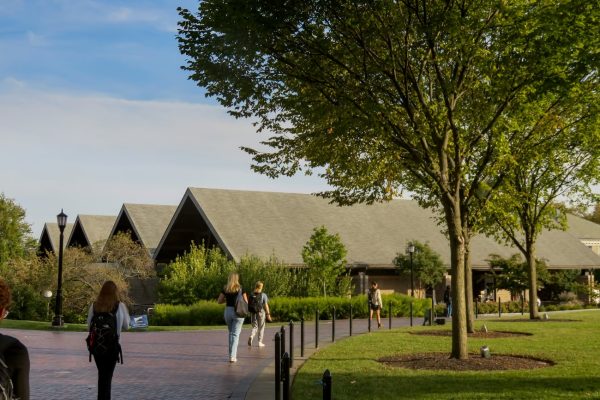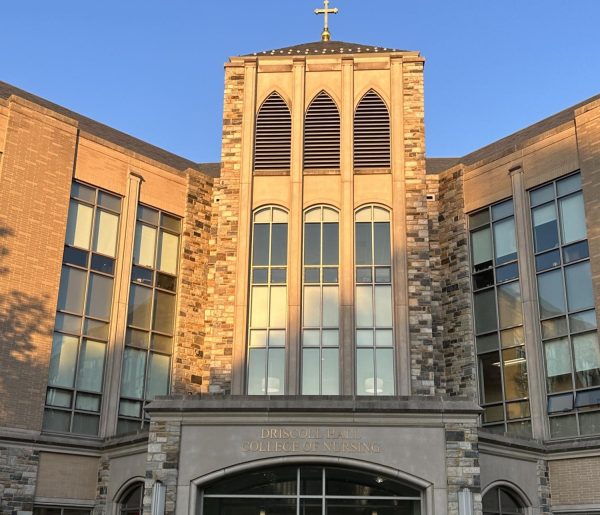The REAL Iraq – Saving SPC Grey
November 1, 2003
To whom it may concern:
Below is an article written by a Villanova alumnus who is a doctor with the Army serving over in Iraq. The news today is filled with depressing stories of attacks and death, but here is one of hope and life from the frontlines. The author’s name is Maj. Kevin Cuccinelli, MD. His two requests for the article are that the name list at the end be included to honor those who made a sacrifice and took part in the successful effort to save SPC Grey’s life and that you could let us know if you will print the article and if so, when? Thank you for your time with this matter.
SAVING SPECIALIST GRAYBy MAJ Kevin J. CuccinelliBattalion Surgeon, 1-8 Infantry
On September 8, 2003, Army Specialist (SPC) Roy Alan Gray was on a convoy bringing dinner to other members of his battalion, the 1-8 Infantry “Fighting Eagles,” 3rd Brigade Combat Team, 4th Infantry Division. The convoy had arrived at its destination; he had completed his duties and was getting ready to go to the practice range to fire his weapon. He was in his vehicle when suddenly a mortar round struck 30 feet away. Shrapnel from the mortar shot through the door of his truck and cut through his thigh, leaving a gaping hole. He was also hit in the shoulder and ear, but the left thigh wound was immediately life threatening.
At his location was the forward deployed aid station for his unit. They acted quickly, called for an Air MEDEVAC immediately, and attended to his injuries while the helicopter was en route. The medics initiated this care as more mortars continued to impact around them. They were able to get 2 large bore IVs started and began pouring fluid into him. The wound to his thigh was so severe that initial treatment measures were not successful. The medics, therefore, quickly opted for a measure of last resort: a tourniquet. The reason this is a last resort is that tourniquets are designed to stop bleeding by stopping all blood flow to the affected limb. This greatly increases the chances of losing that limb due to lack of oxygen and nutrition. It is only recommended when the person’s life is at stake. The surgeons would later report that if not for the speedy and excellent care the medics provided, he would not have survived to the hospital or made it to the operating room (OR) alive, due to blood loss.The 54th Medical Company MEDEVAC team (UH60, Blackhawk helicopter crew) responded with their usual promptness, arriving at the site in approximately 25 minutes. Once they receive the call, it takes approximately 18 minutes to prep a helicopter to get airborne. The remainder is flight time and crew prep. It was only a 5-minute flight, which means the crew was ready to go, from a dead stop, in less than 2 minutes. They arrived, loaded SPC Gray onto the helicopter and flew him to the 21st Combat Support Hospital (CSH).Less than 15 minutes after hitting the door, the ER staff had performed a rapid assessment and he was on the operating room table being treated and stabilized. At this point, all medical personnel thought death was imminent. An emergency medical board was done to insure benefits to the family. They didn’t think he would live the 3 hours required to complete the board. He had lost almost all of his blood. Hemoglobin and Hematocrit, lab tests that measure blood levels, were at critical levels of 1.6 and 6.2, respectively. Normal levels are approximately 15 and 45. His blood pressure to perfuse his vital organs was being maintained with the initial IV fluid push.
Now the doctors and nurses began blood transfusions with red blood cells, the cells that transport oxygen. The orthopedic surgeon placed an “external fixater” on SPC Gray’s shattered femur, the large bone in the thigh. This is a temporary fix to stabilize the injury. They also cleaned out his wound and began antibiotics to help with potential infections. In the OR, an arteriogram, which is an x-ray where they shoot dye into the blood vessels to search for bleeding was done. Discovered sources were controlled. He had been intubated (a breathing tube and ventilator) and was receiving medicine for pain and sedation. He was then transferred to the Intensive Care Unit (ICU) where he received round the clock attention from the staff, who managed all his medications, ventilator, fluid balance, blood transfusions, IV fluid replacement, wound care and labs.
Monitoring his labs determined that he had ongoing significant bleeding and was requiring continued replacement. The cause of the bleeding was unclear. Was it more open blood vessels or his body’s reaction to the donated blood? At times his bleeding was faster than the replacement. The decision was made to again take him back to the OR for exploration as to the source of bleeding. The wound left a large hole in his thigh that the surgeons could fit their hands through. Amazingly, with all the damage,, the largest artery, vein and nerve were not damaged, though everything around them was. His condition was tenuous. There was some bleeding, which was controlled; however, not to the extent that would explain the blood loss. The wound was cleaned and packed with special gauze impregnated with substances to help clotting. He was returned to the ICU for continued care and monitoring.He continued to lose blood. The hospital staff became concerned that they would not have enough. Furthermore, the red blood cells and plasma he was receiving only represent a portion of all the substances in our “whole” blood. Platelets, another portion, which are necessary to clot blood, were not available in the blood bank. These levels had also dropped criticallly to levels of 14,000 (normal is 250-450,000).
The doctors began an impromptu blood drive. They simply walked from room to room in the hospital asking for personnel with 0 positive blood. Every available person with O+ blood capable of donating did not hesitate to do so. Additionally, SPC Gray’s company commander, CPT Kevin Ryan, rapidly mobilized the soldiers of his company, known as “Team Hammer.” He and the battalion’s doctor returned from the hospital to report on SPC Gray’s condition to the worried soldiers that were his co-workers and friends. They were notified that SPC Gray was likely going to die, but that the people taking care of him were doing everything possible to give him a fighting chance. This included the critical need for blood. Everyone with O+ blood was asked to go to the hospital and donate. Less than 5 minutes later, CPT Ryan and the doctor returned to the hospital to find 30 soldiers had beaten them back there and were in line outside the lab waiting to donate. This group also included members of the North Dakota National Guard whom CPT Ryan had called for help. None of who knew SPC Gray personally. They simply knew what uniform they shared.The bleeding continued. Gray requirde huge amounts of fluid and blood to maintain his blood pressure and keep him alive. Discussions of whether the efforts were futile were entertained. What are we missing? Is there anything else we could be doing? They had already discussed amputation, but the damage was too far up his leg. Now that a large source of blood donors was available, and 12 more hours passed without improvement in his stability, he was taken to the OR for a 3rd time. Due to his lack of improvement and continued critical state, the doctors were less delicate with their exploration, much more aggressive in their search for a cause of the ongoing bleeding. His wound was cut open further to enlarge the exposed area. Parts of tissue were sacrificed in deference to the ultimate goal. Finally, the source was found. A “pumper” was hidden behind the bone and buried beneath most of the tissue in his thigh, coursing backwards. This was tied off. Many slow seeping bleeding sources were cauterized (burned) to stop them. And a new substance, called “Quick Clot,” was used in a non-conventional fashion. It was spread over the surface to concentrate the blood seeping, thereby assisting with its ability to clot. This is not typically used in this manner, but the surgeons wanted to take all precautions.2 hours later, for the 1st time in 36 hours, SPC Gray’s blood levels were stable without getting any additional blood products. The nurses continued to check frequently. The next lab results were even higher. His blood pressure was no longer falling and he did not need medication to maintain it. Other indicators of organ perfusion and function were also good. His clotting indicators improved and stabilized. His kidneys were working. A pink hue returned to his face. He required lower doses of medications. His blood pressure and pulse normalized.At 0230 in the morning of September 11th, the Air Force transported SPC Gray to Baghdad and shortly afterwards to Landshtul, Germany. Here the same care continued. They cleaned his wounds. They treated problems with infection. His broken leg will require further care after he returns to Walter Reed Hospital, in Washington, D.C. He may be taken off the ventilator and regain consciousness to discover all the fuss he caused!A total of 47 units of blood products were given. Our bodies have about 6 liters of blood; therefore, this represents approximately 2 complete replacements of his blood supply. This does not include the 24 liters of IV fluid he received, representing another 4 total volume replacements. He now has 47 different people’s blood coursing through his body. 61 people signed up to give blood, including members of his unit, soldiers he didn’t know from other units, medical staff taking care of him, and others who just heard about the situation.By rights SPC Roy Gray should not have survived. Had he not been injured right next to his Aid station, but somewhere else on the mission, his immediate care would have been delayed. He would have to bled to death. Had the helicopter not arrived so promptly, delaying his access to surgery and blood; had the hospital not expertly evaluated him and quickly stabilized him, halting and reversing the life threatening bleed; had the blood drive not been successful, the hospital would have run out of blood; had the hospital staff not had the time to give heightened attention to his condition; Had the doctors not persisted and gone back to the OR for a 3rd time and discovered a hidden bleeder; All of these things were critical.By last count, 113 people took direct part in the care of SPC Gray from point of injury to initial evacuation from theater. It took that many “cogs in the wheel” to accomplish the improbable save. There were many individual cogs, that if any failed, SPC Gray would have died. This does not include another Blackhawk crew to Baghdad, an aircraft (C-130) crew to Germany, another hospital staff in Germany, another flight to Washington D.C., and another hospital staff in D.C. to continue his long road to recovery.This number does not include those who indirectly supported his care, such as hospital personnel who keep the hospital running, flight coordinators, supply personnel, etc. What about keeping all these people fed, sheltered and paid? Who made sure all the equipment in the ER/OR/ICU was stocked and available for use? Who kept all the vehicles involved in working order? Who is helping the families back home? SPC Gray’s case is representative of the esprit de corps of those in uniform. There are many people involved. The medical care was not just Army doctors and nurses. It was medics, pilots and their crews, lab techs, infantry, active duty, National Guard and Air Force. This was just for one case. There are other hospitals in theater that are busier, some not. The other branches of the military could easily come up with a similar story. These are people not often seen back home, because they are not the ones going after Saddam, manning checkpoints or raiding weapons caches. Yet these are the ones who see all the casualties. It is their job. They understand truly that “Freedom isn’t free.” The people in this chain stare at the horrors of the war on a daily basis.They witness freedom’s price. They too risk their lives, left their families and friends and sacrifice to support the causes involved with IRAQI FREEDOM. They spend all day, everyday attempting to get all the SPC Gray’s home to their families, alive and well.
The following persons saved SPC Roy Allen Gray’s life:
1-8 Infantry, Forward Aid Station:MAJ Wayne Slicton, 1LT Kyle Chowchuvech, SGT Steven Welch, SGT Sean Burns, SGT Curtis Driver, SGT Garrazola (64th FSB), SPC Cory Sheldon, PFC Michael O’Shaughnessy, PV2 Earl Bennett
54th Medical Company, Air Ambulance, Blackhawk crew:CPT Price, WO1 Walters, SGT McGovern, SPC Rafiq
21st Combat Support Hospital:ER staff: CPT David Coffin, CPT Emma, CPT Johnson, CPT Winn , 1LT Bishop, SGT Aquino, SGT Fisher, SPC Burrell, SPC Doetzer
OR staff (3 shifts): MAJ King, MAJ White, CPT Rathjen, CPT Ritter, 1LT Kosterbader, SGT Emerick, SGT Longfoot, SPC Ontivarios
21 CSH Doctors: COL Kilburn, LTC Endrizzi, LTC Kim Kessling, MAJ Olsen, MAJ Doug Boyer, MAJ Matt Brown,
ICU: MAJ Gorren-Good (GG), CPT Kate Carr, CPT Jen Florent, CPT Pulliam, 1LT Brandt, 1LT Krans, SGT Norman, SGT Troy Smith
LAB: SGT Stanley Taylor, SGT Larry Harrod, LT Reynaldo Torres, SPC Christian Chavez. SSGAntoine Smith. SPC Jordan Uzzo, SPC Mario Flores-Bautista, SPC Jason Williams, PFC Andrew Craig
1-8 IN CHAPLAINCY: CPT Leif Espeland, CPT Dallas M. Walker (21 CSH), CPL Jesse Whitaker
BLOOD DONORS: CPT Janice Follwell, 1LT Reynaldo Torres, SPC Jordan Uzzo, SGT Erick Cedeno, MAJ Douglas Boyer, COL Robert Lyons, PFC Thomas Watson, CPT Dallas Walker, SSG Raeby Malone, SGT Albert Juarez, Bryan Goff, 1LT Gregory Hotaling, CPT Kevin Ryan, CPL Simon Benkovic, SPC Matthew Harmon, SPC Shane Bartrum, PFC Kenneth Griffin, SGT Andrew Casebolt, Robert Henderson, CPL Chad Pecha, SPC Michael Marin, CPL Christopher OHearn, SPC Steven Haston, Brian Finney, PFC Ezra Davis, Jaime Martinez, SPC David Marron, SSG Ryan Miller, PFC Aaron Taylor, SPC Adam Gajewski, CW2 Wayne Fylling, Kevin Kerner, Charles Monson, Chad Vinchattle, Kevin Slagg, Cory Cavett, David Aldrich, Michael Gross, SPC Nicole Jochim, Vanessa Imdieke, David Drehn, SPC Curtis Petrick, SPC Derek Lennick, SGT Bracston Mettler, PFC Carmichael Gilespie, SSG Dwayne Hickman, CPL Jessica Larriba, CPL James Geah, SPC Jerry Nowell, SGT Tyler Berry, PFC Blondene Leys, SPC Lenroy Millet, SPC Dwayne Cooper, SPC Brandon Curran, PFC Adam Taylor, Carson Stringham, SPC Bullard, SSG Z Tumamad, PFC Jeremy Waldie, SPC Aenoi Phommachanh, SPC Richard Kern


